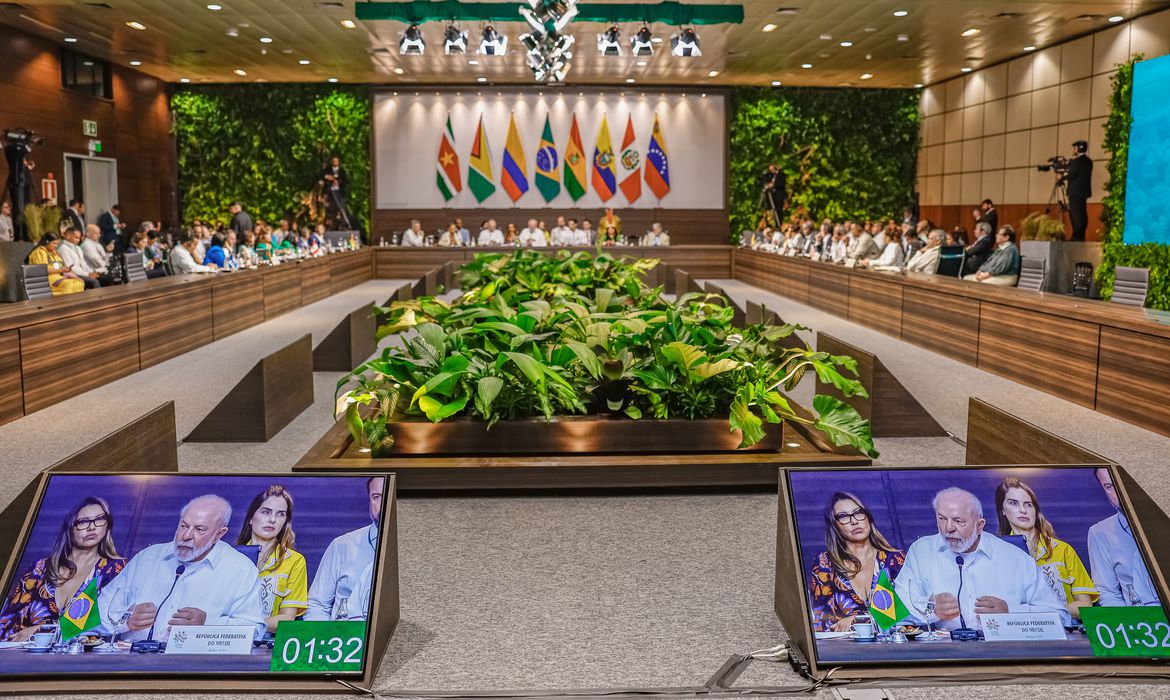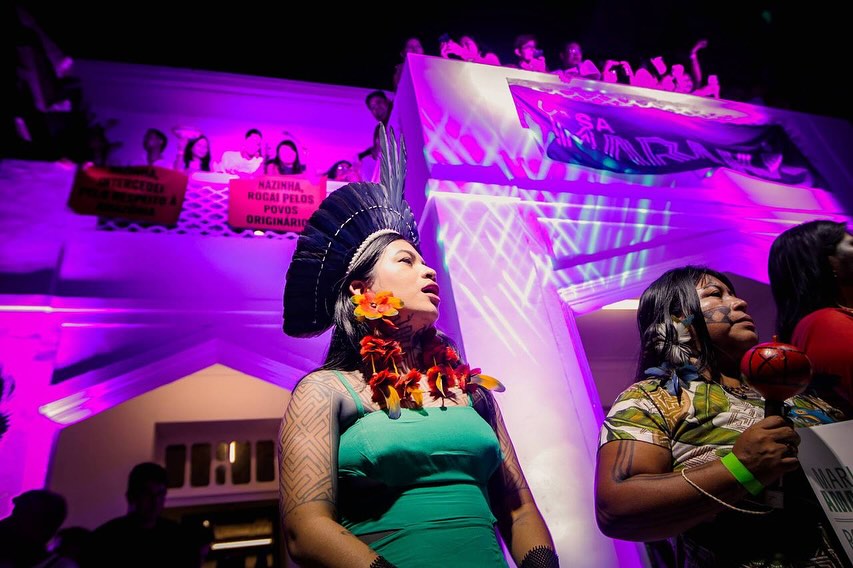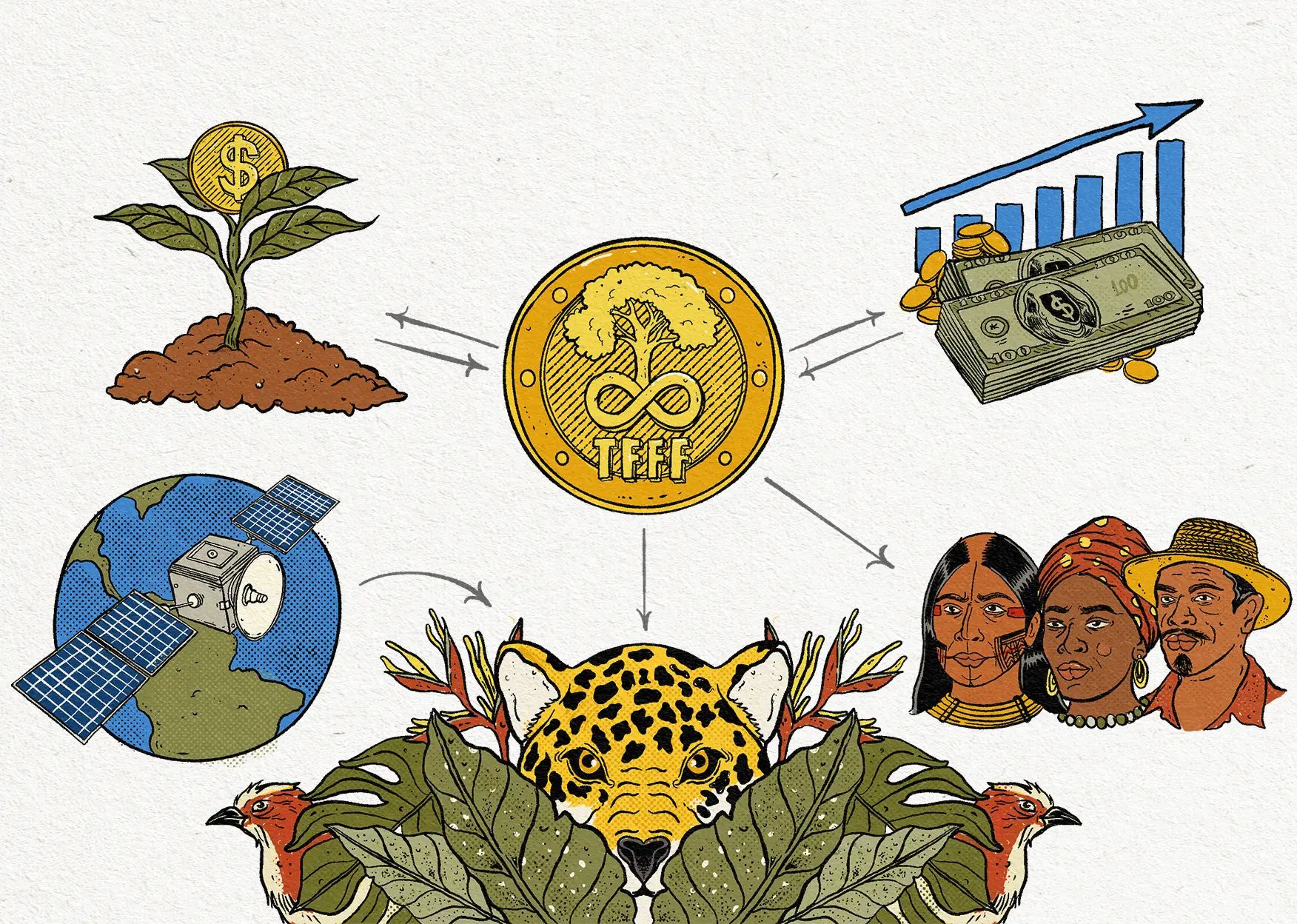
The dual face of development in the Amazon: between the promise of the bioeconomy and socio-environmental conflict
At COP30, a key question emerges: are Amazonian peoples facing the advance of agribusiness, or defending the forest through the bioeconomy?
Raul Mareco, from the NINJA Collaborative Coverage at COP30
As the eyes of the world turn to Belém, host of COP30, the Brazilian Amazon reveals itself as a stage for deep disputes. This is not a mere battle of narratives: on one side, governments, NGOs, and companies defend the bioeconomy as the great bet for sustainable development. On the other, agribusiness advances, appropriating the green discourse to legitimize its monocultures and turn the forest into commodities.
The bioeconomy has risen as the main political and institutional bet for the Amazon’s future, presented as the solution capable of reconciling economic development, social justice, and environmental preservation.
What is at stake is the definition of which future will prevail: that of the “standing forest,” or that of an “impostor conservation” serving the logic of the Plantation Ecology.
Institutional support for green entrepreneurship
Institutional backing has been a fundamental pillar in driving the bioeconomy in the region. The Brazilian Service of Support to Micro and Small Enterprises (Sebrae), in Pará, for example, offers technical and financial support to startups and entrepreneurs through programs such as Inova Amazônia, which supports new technology-based businesses, and the “Socioenvironmental Impact Business” programs — NISA, and “NISA Delas,” the latter specifically aimed at women entrepreneurs.
According to reporter Bianca Virgolino, for the portal O Liberal (08/11/25), Sebrae/PA’s Sustainability and Innovation manager, Renata Batista, stated that “the bioeconomy is one of the main bets of the institution for the sustainable development of the Amazon.”
Renata also argued that “this market is expanding and represents a real opportunity for income generation, social inclusion, and appreciation of Amazonian biodiversity.”
The future lies in the standing forest
The study “Economic impacts of investments in the bioeconomy in Pará,” conducted by the World Resources Institute (WRI) Brazil in partnership with researchers from the Federal University of Pará (UFPA), revealed that, in the state hosting COP30 alone, the bioeconomy already moves R$ 9 billion.
This value is tied to 13 Amazonian products that are already part of an active supply chain in national and international markets: babassu coconut, açaí, açaí heart of palm, andiroba, native bee honey, babassu oil, buriti fiber, cocoa almond, Brazil nut, copaiba oil, cupuaçu, rubber from the rubber tree, and annatto dye powder.
All sourced from family farming and traditional communities in the state.
The shadow of agribusiness beneath Amazonian green
While displays showcase a green future, a “shadow mode” advances backstage: the agribusiness model in the Amazon — the Plantation Ecology.
This concept describes a logic in which large monoculture farms, like soy, take the place of forests and treat land merely as a source of profit.
The discourse claims sustainability, but in practice this logic increases deforestation, expels communities, and destroys local diversity.
At its core, it is a strategy for agribusiness to expand using an environmental “façade,” making it harder for true sustainable development to materialize in the Amazon.
The agribusiness sector, backed by the State, adapts rules and technical criteria to allow extensive crops to occupy territories originally designated for environmental protection. This process essentially occurs in two phases:
First, the forest is converted into a “consolidated” area. Through administrative regulations, forests undergoing regeneration are reclassified as established rural zones.
This makes recovering green areas legally treated as former agricultural fields, facilitating their clearing under an appearance of legality.
Then, environmental protection is shifted to less productive areas. Land-use maps are drafted to change land designations; thus, the most fertile and flat portions can be occupied by soybean plantations, while the obligation to preserve natural remnants is transferred to steep or low-productivity lands.
As a result, soy expands legally over prime areas, while “preservation” is restricted to less valuable zones.
On the human side, the impact is profound. The pressure exerted by agribusiness, combined with the lack of government support, forces farming families to relinquish their properties, leading to what is known as deterritorialization.
Communities once known for their diverse production systems end up swallowed by monocultures, losing space, identity, and tradition.
This pattern of removal and marginalization does not happen in isolation; it continues generating land speculation, worsening social disparities that also appear in the daily life of Belém’s urban neighborhoods.
In the background lies an ambiguous State: what laws and government plans promise does not correspond to what is seen in the forest.
In the end, the major question emerges: will the bioeconomy truly become the path to Amazonian protagonism, social inclusion, and genuine conservation — or will it turn into yet another façade for the expansion of a predatory model dressed in sustainable makeup?
Amazonia after COP30: commodities or a green economy?
The current scenario in the Amazon is one of palpable tension. On one side, market projects, certifications, and initiatives aimed at valuing the so-called “standing forest” multiply, seeking to link traditional knowledge and biodiversity to new forms of income and economic inclusion for forest peoples, extractivists, and family farmers.
However, beneath the colorful panels and optimistic speeches at COP30 events, there is intense movement by actors using legal loopholes and regulatory mechanisms to enable the advance of monocultures in areas once protected, as mentioned in the Plantation Ecology.
International visibility increases the weight and responsibility of governments, companies, and social movements in the search for solutions that truly reconcile socio-environmental justice and sustainable economics.
This is a real watershed moment: is the bioeconomy destined to promote more balanced, inclusive development that respects those who live from the forest?
At a time when institutional discourse champions “green,” but capital insists on carving paths between trees and rivers, the fate of the Amazon rests on the choices made now.
The Amazonian crossroads forces the world to decide: living forest or progress without order?
Justice for all or profit for a few?
The time for an answer is now, when every decision reverberates from the forest floor to the great international summits.




